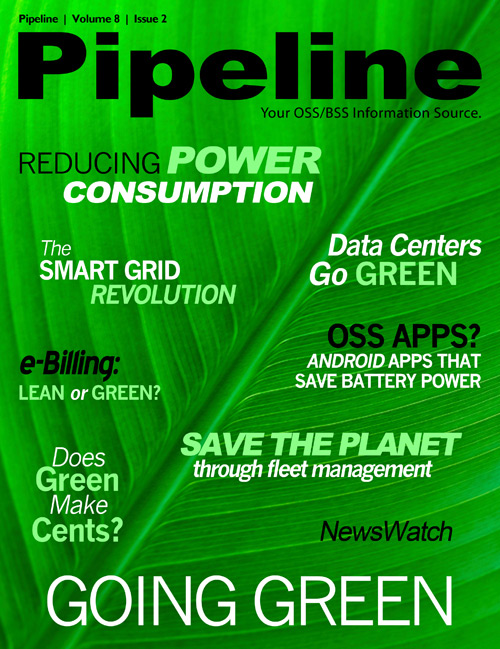Workforce and Fleet Management
By: Tim Young

This issue has focused on the use of various solutions and best practices to reduce energy consumption
and therefore, promote both carbon reduction and cost reduction along the way. However, most of the
conversation has been around how data centers and infrastructure elements can be greened, or how
billing processes can be refined to sidestep physical mailings in favor of e-billing.
However, one source of massive cash—and carbon—output can be found idling alongside worksites all
over the globe.
Communications Service Providers manage massive fleets of heavy, thirsty vehicles that are deployed
on a variety of errands, creating enormous impacts on balance sheets of major operators. AT&T, for
instance, has over 75,000 vehicles in its fleet, ranging from small to massive. That makes it the owner of
the largest commercial fleet in the United States.
Verizon sports its own massive fleet, with some 65,000 cars, trucks, and vans of its own. Comcast has
some 39,000 vehicles in its fleet, which it calls the fifth largest fleet of vehicles in the United States in its
corporate responsibility statement (http://www.cmcsk.com/documentdisplay.cfm?DocumentID=6024).
If you leave out the United States Postal Service and only count non-government fleets, like publication
Fleet Central does, it’s the fourth largest fleet in the US (http://www.fleet-central.com/TopFleets/pdf/
top300_09.pdf).

 And these fleets can rack up some serious miles. One case study I recently read (from fleet services
provider Trimble) stated that US cableco Cox Communications manages 5,000 vehicles, which
collectively travel 80,000,000 miles in a calendar year.
And these fleets can rack up some serious miles. One case study I recently read (from fleet services
provider Trimble) stated that US cableco Cox Communications manages 5,000 vehicles, which
collectively travel 80,000,000 miles in a calendar year.
That’s roughly 167 trips to the moon and back. In fact, depending on the position of the two planets
relative to one another, that’s more miles than you’d travel on an Earth-to-Mars-to-Earth round-trip.
And that’s a much smaller fleet than a provider like AT&T has to maintain. While I couldn’t find a
figure on miles traveled by the AT&T stable, I did find that the vehicles collectively consume around
80,000,000 gallons of fuel per year. At current fuel prices (US national average today is $3.57/gallon for
gasoline and $3.89/gallon for diesel), that’s an annual cost of roughly $300,000,000 for fuel alone.
Relieving the Agony of the Fleet
With this large price tag, small wonder that service providers are taking an increasingly active role at
looking at fuel costs and other costs associated with maintaining fleets, along with the environmental
impact of massive numbers diesel- and petrol-based vehicles operating in a way that isn’t always as
efficient as it could be.
Methods for increasing efficiency range from the simple to the grandiose.
AT&T, for example, is making massive strides towards reducing the number of petroleum-powered vehicles in its fleet. The carrier famously announced in March of 2009 that it would be replacing 15,000
of its vehicles with models powered by alternative fuel by 2018. Compressed natural gas, or CNG, plays
a major part in that strategy, as some 8,000 of these vehicles will run on CNG.





